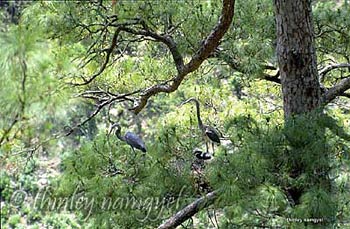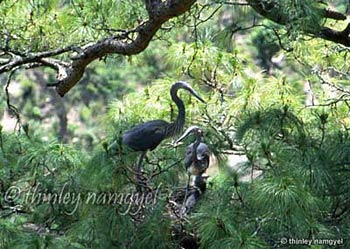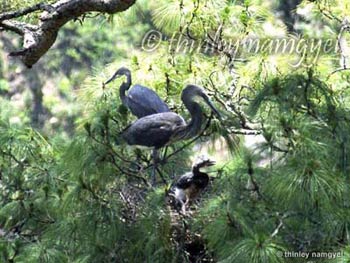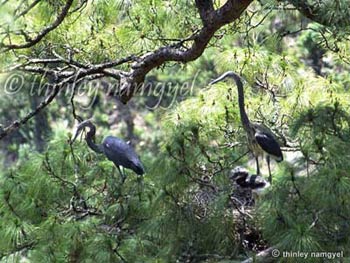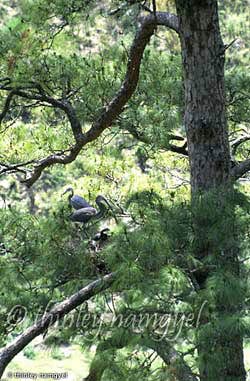| home | bhutan | gallery | about | guestbook |
![]()
White
Bellied Heron (Andrea insignis)
|
|
|
|
Considered to be one of the 50 most rarest birds in the world, the sighting of this pair of globally threatened white bellied herons is really significant because a nesting site of the white bellied herons had not been seen for over 80 years since the last sighting in Burma in the 1920s. In 2003, with financial support from a wellwisher, the Royal Society for the Protection of Nature (RSPN) started a project to study the White Bellied Heron, which is found in Bhutan. A few individuals were known to live along the Punatsangchu Valley. In April of 2003, the RSPN found a nesting pair! The photographs in the series here were taken on May 18, 2003. This was my second visit to the nesting site with the researcher from RSPN who was stationed at the site. The pair already had a month old chick by this time. The site is a chir pine forest in a small dry valley of a tributary to the Punatsangchhu. The nest is high up on a large chirpine tree and you would not see it or the birds unless you knew where to look. The chick is about a month old in the pictures and has started to stand and stretch its wings a bit. It has the characteristic white belly and has a yellow stripe on throat. The parents take turns feeding. When one bird is out feeding, the other stands guard over the nest. That morning, from 6:30 am to 1pm, two shifts were observed with one parent away for 2-3 hours at a time. These are the best pictures I could get within a limited amount of time and with limited equipment (80-200 lens with 2x converter). View is from a hide upslope with difficult lighting. There is some amount of cropping of the pictures excpet for the photo below and the top-most frame.
|
![]()
all
images © thinley namgyel
